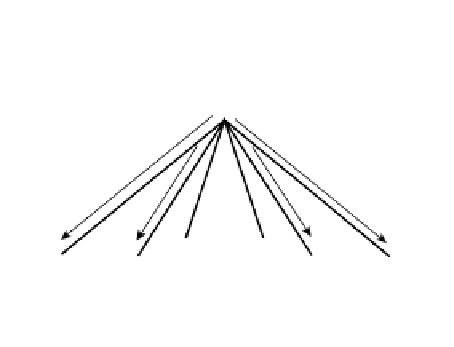Information Technology Reference
In-Depth Information
Using a Multicast Distribution Tree (MDT) results in a significant reduction of data traffic
and solves the scaling issue of linear traffic growth across the network. The source itself is
required to send only a single stream, which is replicated at each branch of the distribution
tree. This process distributes the load of generating the additional data and optimizes the
location of the data replication by moving it as close to the receiver as possible.
This doesn't mean that multicast-based delivery has no scaling issues. The primary issues
are fan-out and packet replication, as shown in Figure 11-3.
Figure 11-3
Multicast Data Replication
On many platforms, packet replication is handled in hardware, thereby minimizing the
performance impact.
Multicast Group Notation
A multicast group is identified using a Class D IPv4 address that is in the range 224.0.0.0/4.
The group is used in place of the destination address in the IPv4 packet. The source address
field of the IPv4 packet is the IP address of the actual source of the stream.
There are two ways to define a particular multicast stream. The first is by group only. This
is notated by (*,G), pronounced “star comma G.” This notation refers to a particular group
(G) and includes all sources sending to that group. This notation is used when working with
a shared tree or an MDT that is shared by all sources sending to a single group.
The second way of identifying a stream is by the source and group pair. This is notated by
(S,G), pronounced “S comma G.” This is a more specific case of (*,G) in that it includes
data from only a single source. The (S,G) notation is used when working with a source tree
or with an MDT that is used by a single source sending to a specific group. It is common to
use the term Shortest Path Tree (SPT) when discussing source trees.





















